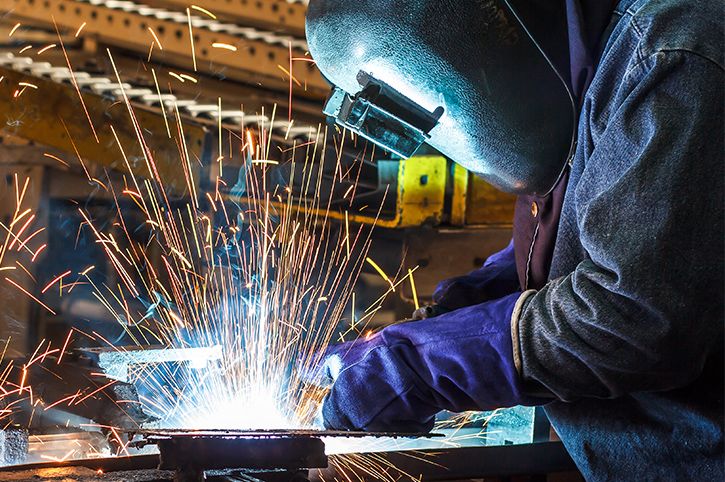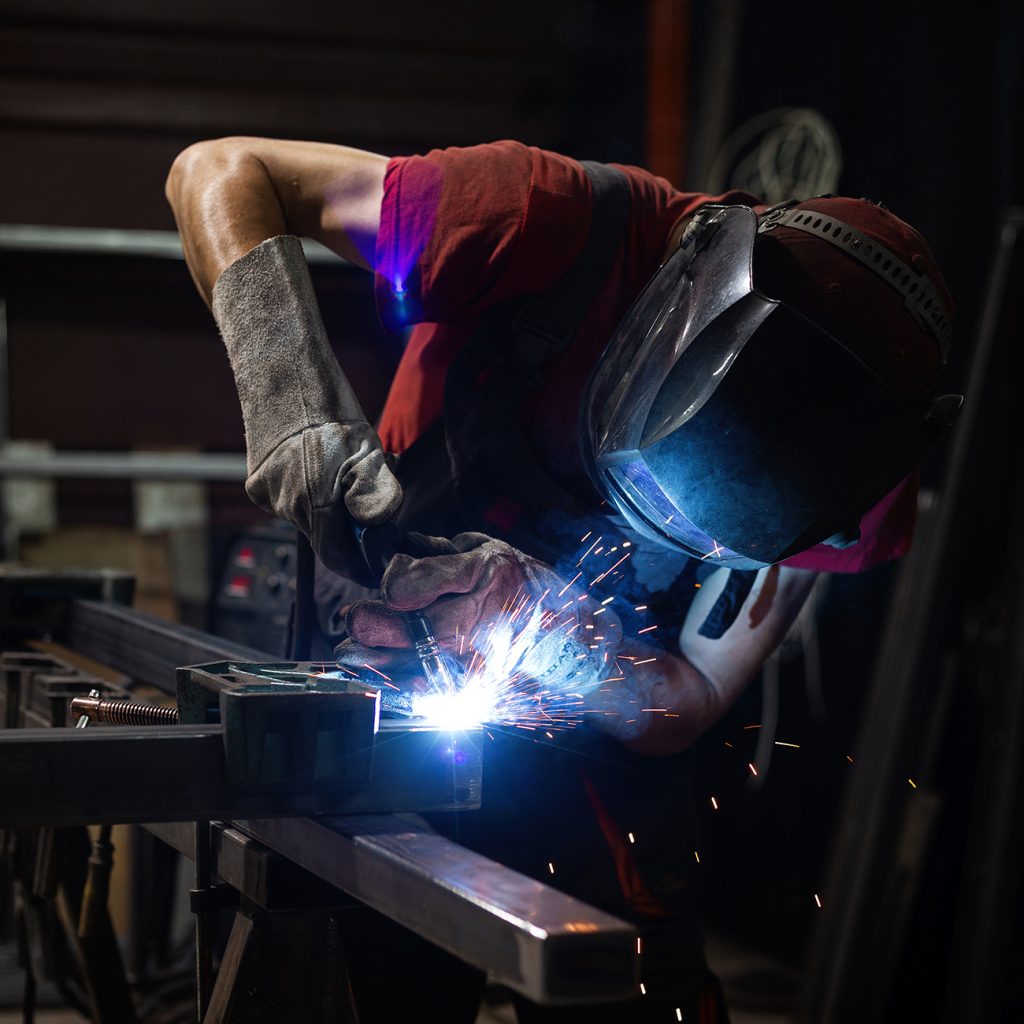Usual Welding Fixing Issues and Exactly How to Address Them Successfully
Welding repair work often run into a series of issues that can jeopardize the integrity of the last product. Usual issues consist of inadequate penetration, porosity, and misalignment, to name a few. Each issue offers one-of-a-kind challenges that require specific strategies for resolution. Comprehending these problems is important for welders intending to enhance their end results and skills. This discussion will certainly check out these typical welding fixing concerns and effective techniques to address them.
Inadequate Penetration
Inadequate infiltration takes place when the weld metal fails to fully fuse with the base product, leading to weak joints and possible structural failings. This problem usually stems from insufficient warm input, wrong electrode angle, or incorrect welding rate. Welders might run into poor penetration due to a mistake of the necessary criteria for a specific product thickness or type. Additionally, contamination on the base product's surface can hinder effective bonding, intensifying the issue. To deal with poor infiltration, welders must assure ideal setups on their devices and preserve a clean work surface. Normal evaluation of welds is advised to recognize any kind of deficiencies early, enabling for prompt improvements and the prevention of compromised architectural honesty in bonded assemblies.
Porosity
Porosity is an usual flaw in bonded joints that materializes as little gas bubbles caught within the weld steel. This flaw can jeopardize the stability of the weld, causing reduced stamina and possible failure under tension. Montana Mobile Welding and Repair Belgrade. Porosity normally emerges from contamination, wetness, or incorrect welding techniques, which enable gases to run away into the liquified weld pool. To deal with porosity, welders need to ensure proper surface prep work, preserve a tidy working environment, and make use of suitable welding specifications. Furthermore, picking the right filler material and protecting gas can mitigate gas entrapment. Normal assessment and screening of welds can assist determine porosity early, ensuring prompt restorative activities are taken, therefore maintaining the high quality and reliability of the welded structure
Imbalance
Misalignment in welding can arise from numerous factors, including improper arrangement and thermal expansion. Recognizing the source is essential for efficient resolution. A number of correction techniques are available to straighten components and guarantee structural stability.
Causes of Imbalance
Welding imbalance commonly comes from a selection of underlying concerns that can jeopardize structural integrity. One primary reason is improper fit-up of parts prior to welding, which can bring about gaps and irregular surfaces. Variants in thermal growth throughout the welding procedure can also result in distortion, particularly if the materials being signed up with have various coefficients of growth. In addition, insufficient clamping and fixturing might stop working to hold parts safely in area, bring about movement during welding. Badly conserved devices, including welding makers and devices, might present variances in the weld bead, further adding to imbalance. Driver mistake, stemming from insufficient training or experience, can likewise play a significant role in developing misaligned welds.

Improvement Methods Offered
Resolving imbalance successfully requires a mix of corrective techniques tailored to the specific concerns available. One common approach is using jigs or fixtures to hold elements in the proper position during welding, ensuring constant alignment. Additionally, pre-heating the materials can help in reducing distortion and boost fit-up. For considerable misalignment, mechanical realignment techniques, such as using hydraulic jacks or clamps, can be utilized to correct the position prior to welding. Post-weld heat treatment may also be needed to soothe stress and anxieties triggered by imbalance. Mindful inspection and adjustment during the arrangement stage can protect against imbalance issues from becoming substantial troubles, promoting a smoother welding procedure and boosting general architectural integrity.
Distortion
Distortion is an usual obstacle in welding that can occur from various aspects, consisting of irregular heating & cooling. Recognizing the sources of distortion is essential for carrying out effective avoidance strategies. Addressing this problem not only boosts structural integrity however likewise improves the overall quality of the weld.
Sources of Distortion
When based on the intense heat of welding, materials often undergo changes that can lead to distortion. This sensation mostly emerges from thermal expansion and tightening during the welding process. As the weld area warms up, the product expands; upon air conditioning, it gets, which can produce inner anxieties. Additionally, unequal heating throughout a workpiece can exacerbate these tensions, causing bending or flexing. The kind of product additionally plays a considerable duty; metals with varying thermal conductivity and coefficients of development might respond in different ways, resulting in unforeseeable distortions. In addition, poor joint design and poor fixturing can contribute to imbalance throughout welding, raising the possibility of distortion. Understanding these reasons is essential for effective welding repair work and prevention methods.
Prevention Techniques
Efficient prevention strategies for distortion during welding emphasis on controlling heat input and ensuring proper joint style. Maintaining a regular warmth input helps to minimize thermal expansion and tightening, which can cause distortion. Making use of techniques such as preheating the work surface can also lower the temperature slope, advertising consistent heating. In addition, choosing ideal joint layouts, such as T-joints or lap joints, can boost security and minimize anxiety focus. Implementing appropriate fixturing to safeguard the work surfaces in area further aids in maintaining placement throughout the welding process. Lastly, staggered welding series can distribute heat a lot more uniformly, avoiding localized distortion. By applying these methods, welders can greatly lower the likelihood of distortion and improve the overall top quality of their welds.
Breaking
Fracturing is a typical concern encountered in welding repair work, often resulting from various elements such as inappropriate cooling prices, material Read Full Report option, or inadequate joint preparation. The incident of fractures can significantly compromise the honesty of the weld, leading to potential failings during operation. To address this issue, welders must initially examine the origin, making sure that materials are compatible and suitably chosen for the certain application. Additionally, managing the air conditioning rate throughout the welding procedure is essential; quick air conditioning can cause stress and anxiety and cause splitting. Proper joint layout and prep work also add to decreasing the danger. Carrying out these methods can improve weld high quality and durability, ultimately decreasing the chance of cracking in completed weldments.

Incomplete Combination
A substantial concern in welding fixings is incomplete fusion, which happens when the weld steel does not properly bond with the base product or previous weld passes - Belgrade Fabrication. This flaw can lead to weak points in the joint, possibly compromising the integrity of the welded framework. Elements contributing to incomplete combination consist of inadequate warmth input, incorrect welding strategy, and contamination of the surface areas being signed up with. To resolve this concern properly, welders should assure proper pre-weld cleansing and surface area preparation, along with change their welding parameters to achieve adequate infiltration and blend. Regular assessment during the welding process can also help determine incomplete fusion early, enabling for timely rehabilitative actions to enhance the total top quality of the weld
Overheating
While welding repair work can enhance architectural stability, overheating provides a substantial difficulty that can lead to product deterioration. Too much warm during welding can change the mechanical properties of metals, resulting in minimized stamina, enhanced brittleness, and bending. This sensation is specifically critical in high-stress applications where structural dependability is vital. Determining overheating can include aesthetic inspections for staining or distortion, as well as checking temperature throughout the welding procedure. To alleviate the dangers linked with getting too hot, welders should employ suitable techniques, such as controlling heat input, adjusting travel rate, and using ideal filler products. In addition, implementing pre- and post-weld warmth treatments can assist restore product properties and enhance the total high quality of the repair work, guaranteeing long-term performance and safety.
Regularly Asked Questions
What Are the Typical Indicators of a Welding Issue?

Just How Can I Examine My Welds for High quality?
To evaluate welds for high quality, one can make use of visual assessments, ultrasonic screening, and radiographic methods. Each technique ensures structural integrity, recognizes issues, and confirms adherence dc welding to specified criteria, eventually boosting the dependability of the bonded joints.
What Safety and security Precautions Should I Take While Welding?
When welding, one ought to prioritize safety by wearing suitable personal safety tools, making certain proper air flow, securing flammable materials away, keeping a tidy work space, and understanding environments to stop injuries and accidents.
Can I Fix a Weld Without Renovating the Entire Joint?
Fixing a weld without renovating the entire joint is possible, depending on the damages (Belgrade). Strategies such as grinding, including filler material, or utilizing a welding procedure can properly address certain problems while maintaining the surrounding structure
What Devices Are Essential for Effective Welding Repairs?
Necessary their explanation devices for effective welding repairs include a welding machine, wire brush, mill, safety equipment, clamps, and filler products. Each device plays a vital role in making sure quality and safety throughout the repair service procedure. Porosity normally develops from contamination, wetness, or inappropriate welding techniques, which enable gases to run away into the molten weld swimming pool. Badly maintained equipment, consisting of welding equipments and devices, might introduce variances in the weld bead, further adding to misalignment. When subjected to the intense heat of welding, products often undertake adjustments that can lead to distortion. Splitting is a typical concern run into in welding repair services, often resulting from different factors such as incorrect cooling rates, material selection, or poor joint preparation. A substantial concern in welding repair services is insufficient combination, which happens when the weld steel does not properly bond with the base material or previous weld passes.
Comments on “Top advice from Belgrade Welding professionals”